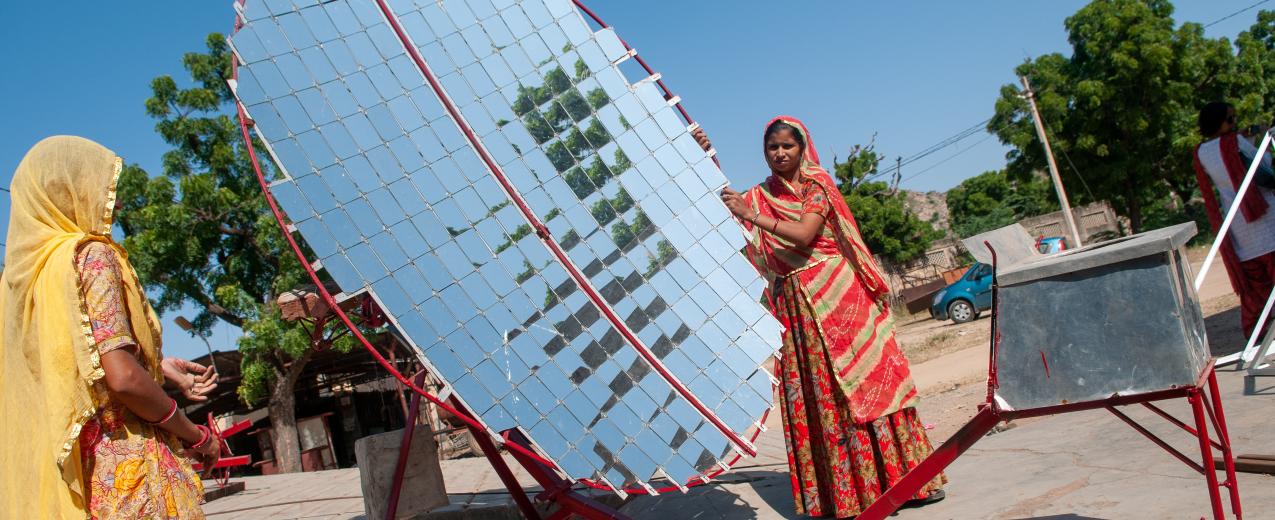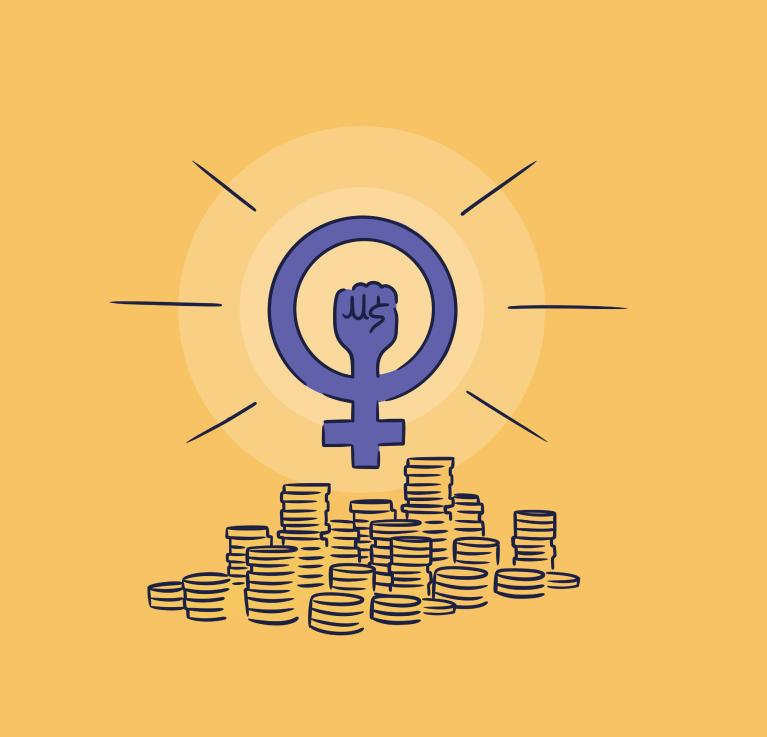
About this call
ODI’s ALIGN programme is looking for institutional partners to undertake primary research and subsequent communication/dissemination activities on the topic of strengthening women’s participation in male-dominated low-carbon jobs in low- and lower-middle income countries (LMICs).
Background
Women are under-represented in many of the newly emerging sectors and roles associated with transition to low-carbon economies, particularly in ‘higher quality’ jobs that require technical and transversal skills. These low-carbon jobs are emerging fields in many countries with new opportunities for ‘decent work’.
Given current patterns of work in these sectors, significantly more jobs are estimated to be created for men than women in the shift to low-carbon economies. For example, women account for only 32% of renewable energy employees, while just 20% of expected net job creation in the renewable energy sector to 2030 will accrue to women. Enhancing women’s participation in these roles can help achieve a more rapid transition to low-carbon economies, as well as contributing to reducing gender gaps in access to ‘decent work’ and to women’s economic empowerment.
One reason for women’s under-representation reflects gender differences in skills. These result, in part, from gender norms and stereotypes about appropriate work for women and men, which influence young people’s subject choices in school and post-school education and training. Other factors recognised as key barriers include broader factors, such as sexist workplace cultures, unequal divisions of responsibility for unpaid care work, and women entrepreneurs’ often more limited access to assets and professional networks.
The evidence base on what has proven effective to boost women’s participation in the ‘green economy’ is limited, particularly in low and lower-middle income countries. This reflects a wider absence of evaluations and studies showing the impact of efforts to boost green economies and specifically women’s and youth participation within them. There is also limited evidence of women’s experiences after graduating from technical training in ‘green skills’ and how much their training is contributing to enhanced economic or wider empowerment outcomes.
Definitions and scope
Green economies: Using UNEPs’ definition, these are economies that result in improved human well-being and social equity, while significantly reducing environmental risks and ecological scarcities. At its simplest a green economy can be thought of as one which is low carbon, resource efficient and socially inclusive.
Low carbon jobs: This workstream will focus on work that reduces emissions of greenhouse gases and promotes more sustainable economies. Work not directly connected to reducing greenhouse gas emissions and promoting environmental sustainability, such as care work, are outside the scope of this workstream.
Green skills: ODI recognises that green economies require many other skills beyond technical skills – both specialised and transversal. However, the focus of this workstream is on reducing gender inequalities in training for, and work in, technical jobs, an area with particular gender disparity.
Rationale
Although skills development programmes have a mixed record, there is agreement that skills form an important barrier to women’s participation in high-potential low-carbon sectors and roles. Skills development initiatives have been one of the most common approaches to supporting the transition to greener economies. Policies to boost green skills have several strands including: strengthening advanced skills through university level courses and strengthening technical skills through Technical and Vocational Education and Training (TVET) and more informal routes.
Little empirical evidence is available of women’s experiences of participating in such programmes or their experiences after graduating from them. Further research can help policy makers and practitioners understand how to strengthen the effectiveness of initiatives to boost disadvantaged women’s skills for, and participation in, male-dominated low-carbon jobs. There is a particular gap in evidence on gender-equitable TVET and technical skills training for low-carbon development which further empirical research could helpfully fill.
Studies also show that skills training is not enough to tackle women’s exclusion from high-return male-dominated sectors. Women face multiple intersecting barriers to working in sectors such as energy, construction, and engineering. Approaches that go beyond technical skills training to incorporate elements of soft skills, mentorship and networking opportunities have shown promise in helping women take up and succeed in roles in male-dominated sectors. Similarly, design features such as providing childcare, and organising training in locations and at times that are compatible with care responsibilities can enhance women’s participation. This had led to calls for greater attention to enabling policies and initiatives of this kind. However, limited empirical evidence of their implementation, and potential in low-carbon sectors in LMICs exists.
Potential research questions could include:
- What impact is training in low-carbon technologies having on women’s development of different types of skills, and their participation in one or more ‘green economy’ sectors?
- Is there any evidence of gender norms starting to shift as a result of greater numbers of women taking up male-dominated, low-carbon jobs?
- (How) do women’s experiences of training differ from those of men? (How) do the experiences of women from varied social backgrounds differ?
- What aspects of design and implementation are enhancing the impact of these training initiatives, particularly for disadvantaged women, and/or how could positive impacts be enhanced?
- How are wider social and economic barriers and challenges to women taking up training and/or working in low-carbon jobs being addressed, and what effects is this having?
- What lessons are there for others seeking to address similar challenges?
What are we looking for?
Proposals should involve primary research to help expand the limited pool of empirical evidence on boosting women‘s participation in decent work in male-dominated, low-carbon jobs in LMICs, and related shifts in gender norms. The research could focus on a particular sector (e.g. renewable energy, transport, construction, waste management), or sub-sector (e.g. e-waste management, solar or wind energy). Climate-smart agriculture is outside the remit of this call, given the greater volume of existing evidence in this sector.
Preference will be given to proposals that:
- Emphasise mixed methods with quantitative and qualitative components.
- Involve primary research with diverse social groups (e.g. from different socio-economic backgrounds, geographical locations or ethnic or religious backgrounds).
- Specify some of the likely measures or metrics to be used.
- Explore how initiatives in this area are contributing to/have the potential to catalyse shifts in gender norms.
- Focus on experiences in a LMIC.
- Explain how insights from the specific policies or initiatives to be investigated may help inform broader policy and practice in this area.
Timeline, outputs and budget
The expected timeline for the project is July 2024 – February 2025. The research, analysis and write up should be completed by the end of January 2025, to allow sufficient time for dissemination activities.
The project should produce the following outputs:
- Methodology: to be refined in discussion with the ODI team during the inception phase.
- Research report: write up of the results, analysis and key findings.
- Presentation of key findings: to share feedback with key stakeholders.
- At least one additional output aimed at practitioners or policymakers. This could include a short executive summary, policy brief, op-ed, blog or other resource material.
The available budget for this project is $25-35,000 USD, which should cover researchers’ time, primary research costs (including travel, data analysis, write up and production of outputs) and dissemination activities.
Eligible organisations must be registered entities, based in a LMIC (per World Bank classification).
How to apply
We welcome proposals in English, French or Spanish (max. 4 pages plus CVs). Proposals should outline the rationale for the proposed research, key research questions, proposed locations, sample and methods for research and analysis, proposed outputs and dissemination activities, timeline and budget.
The closing date is 7am GMT on 6 June. Please send your proposal or any questions to [email protected].
